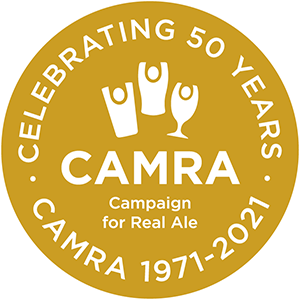McConville's
Northern Ireland - Portadown
Three star - A pub interior of outstanding national historic importance
Listed Status: B1
1-3 Mandeville StreetPortadown
BT62 3PB
Tel: (028) 3835 2266
Facebook https://www.facebook.com/100063775320794
Nearby Station: Portadown
Station Distance: 350m
Public Transport: Near Railway Station (Portadown)
Bus: Yes
View on: Whatpub
The long public bar has a colourful Victorian tiled floor and is split in two by a low partition with double doors. The decorated and mirrored seven-bay carved mahogany bar-back incorporates four casks that would have sold spirits in the past. McConvilles bottled several drinks in the early 20th century including a popular ‘McConville’s Navy Rum’, Kopke’s Invalid Port, a strong Australian wine and their own McConville’s whiskey, which is was still possible to drink here up to 2005. The splendid original bar counter has a typically Northern Irish fringe of colourful hand painted tiles at the top, also a row of small brown tiles along the base and just above it a row of different colourful tiles. Halfway along Mandeville Street is another disused entrance with a fine vestibule entrance with a balustrade, carved urns on the corners and lots of stained glass windows.
The most distinctive, and, again, almost uniquely Northern Irish feature, is the seven snugs ranged parallel to the counter split three from the front door to the side door and another four between the middle door and the main entrance. Also, there are two more affixed to the counter at the far end of the servery making a total of ten snugs altogether. These two snugs have small windows in the part glazed partition on the end of the counter. Each snug has colourful Victorian tiled floor, dado panelling on the street side and bench seating is attached to two sides of each snug. The original and still working central heating pipes run through the snugs. Note the bell-pushes to order drinks and the tiny fixed tables on which to place them. All the snugs retain their doors with glazed panels on the front end. The bell-box where staff could see where service was needed is situated high up at the south end of the room and some of the bells still work.
The other best remaining examples of snugs in Northern Ireland being at the Crown, Belfast, Northern Ireland; Rock, Belfast, Northern Ireland; Ronnie Drew's, Belfast, Northern Ireland; Fort Bar, West Belfast; Blakes of the Hollow, Enniskillen and the rare survivor Carragher's, Camlough, Co. Armagh being a small village pub.
The main entrance is further down Mandeville Street and has an iron canopy from which hangs an old mighty rococo lantern - one of the best anywhere. Inside is a porch formed by partition walls reaching up to the high heavily moulded ceiling. The colourful Victorian tiled floor at this end of the room is particularly well worn and cracked from having barrels of stout rolled across it over many years. It even retains original gas light fittings which can run on bottled gas. The amazingly old fashioned gents’ remain with its black and white marble floor, dado of white tiles and probably the best traditional WC in Northern Ireland with its wooden seat! Don't miss the cigar lighter representing the Tichborne Claimant, an imposer whose attempts to prove he was the vanished Sir Roger Tichborne, the ninth wealthiest man in Britain, captivated public attention during two high-profile court cases in the 1870s. Sadly it has recently been disconnected from its gas supply.
In 2008 a second bar was added without any impact on the original pub. Bar 2 is accessed via its own front door on the left of the building or via a door from the rear of the original bar. The only change was the removal of the original ladies' toilet, which was situated in the left-hand part of the building, presumably as a late add-on to the pub.
 Pub Heritage
Pub Heritage 